Many companies grapple with a discouragingly low lead conversion rate, watching potential revenue slip through their fingers. Addressing this challenge isn’t just about recognizing the problem; it's about understanding its intricacies and devising strategies to turn things around.
In this blog post, we'll look at the root causes of dwindling conversion rates and show you actionable ways to overcome this challenge with the use of surveys. You will learn:
- how to calculate your lead conversion rate,
- why lead conversion matters,
- why your lead conversion is lower than expected,
- and what you can do to boost it.
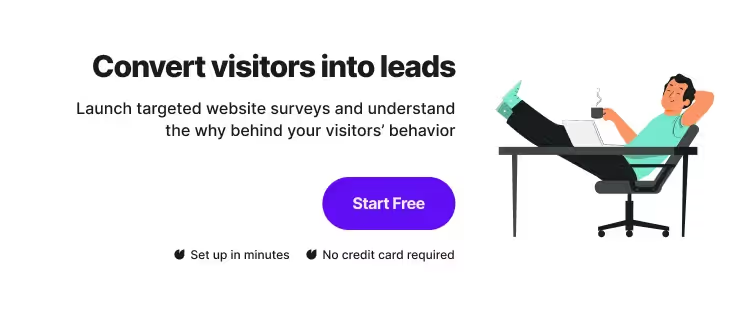
What is lead conversion?
To get started, let's unpack the concept of lead conversion, ensuring we're all on the same page.
Lead conversion is the pivotal moment when a casual visitor turns into a potential lead.
But here, we're primarily talking about marketing leads. These are the fruits of all those savvy marketing strategies designed to entice visitors into subscribing to a newsletter or booking a demo call—they're the golden eggs of conversion.
But how do we gauge this transformation?
In its essence, lead conversion is quantified through a straightforward ratio: the number of visitors who evolve into leads divided by the total number of visitors.
This metric forms the backbone of understanding how effective your efforts are in turning curious onlookers into potential customers.
The simplified calculation would look like this:

The results will be displayed in percentages, which you can easily benchmark against other companies from the same sector as yours. If you have done that and still feel like there is a problem, stick to this article for some actionable insights.
Why is your lead conversion rate lower than expected?
To successfully identify the issue, we first need to have a look at what is considered a ‘healthy’ conversion. Naturally, it will vary from industry to industry, but the average conversion in Google Ads is 4,4%.
The best way to start your journey is by consulting leading companies in your space to understand their performance, or simply just taking it to Google to research more about your industry.
Armed with that knowledge, you can now start looking more closely into the reasons that drive your score lower.
There are multiple factors that can contribute to a low lead conversion rate but, very often, the reasons you’ll find below are the main challenges.
Falling behind the trend
No matter what industry you operate in, you need to continuously keep pace with the trends.
Visitors encounter countless websites, articles, and apps daily, forming biases along the way. If you're not adapting to these trends, be it in web design or value presentation, you risk being left in the dust.
Website performance issues
Your website is ground zero for converting visitors. It's where you aim to meet their needs and challenges with value. But what happens when a visitor wants to try your demo, schedule a call, or sign up for a newsletter, only to find it's a Herculean task? You lose them, plain and simple.
Load speed is equally critical. In today's fast-paced digital world, a three-second delay might as well be a death sentence. Keep things effortless, load lightning-fast, and meet user expectations.
Miscommunication
This one boils down to failing to find common ground and mutual understanding with your visitors. It's not just about the value your product offers; it's about the visual appeal and tone of your message. Using casual language when your audience consists of executives can be a misstep unless that's precisely what you're aiming for.

Using surveys to increase your visitor-to-lead conversion rate
You may think increasing your visitor-to-lead conversion rate is a difficult task, but there's a tried-and-true formula to uncover what's not working: just ask. And what better way to do it than through quick prompts right on your website?
Surveys, by their very nature, provide direct feedback on specific topics. They offer a seamless way for visitors to share their concerns and expectations without disrupting their journey. But before we dive into the 'how,' let's explore the 'why' behind the effectiveness of this approach.
Surveys vs live chat
In the world of SaaS businesses, where interactions primarily occur online, direct communication with your website visitors is paramount. However, it often takes on a one-sided nature.
This is where the website survey prompt comes in, providing visitors with an avenue to express their thoughts and provide valuable feedback.
You might wonder, "Why not use a live chat feature?" It's a valid point, but chats are typically reserved for gathering additional information or confirming visitor assumptions, not for soliciting feedback. It's akin to walking into a store just to tell a clerk you don't like the interior – it's simply not the right tool for the job.
Survey timing
Now, let's address the crucial 'when' of asking for feedback. Timing is everything. Bombarding visitors with surveys right away is a no-go; they haven't had a chance to explore your site.
On the flip side, relying on them to volunteer their insights is equally ineffective.
Surveys play a pivotal role in this dance, allowing you to target them at precisely the right moment. This strategic approach increases the likelihood of obtaining accurate website feedback on matters that truly matter to your marketing team.
Incorporating surveys into your website is not just a smart move; it's a game-changer. By providing a channel for visitors to voice their opinions, you're not only improving your conversion rates but also enhancing your overall user experience.
How surveys can increase your lead conversion rate
Now that we've dissected the 'why,' let's explore how to apply surveys in various real-world scenarios, step by step.
Evaluating the core functionalities and conversion potential
You've probably encountered those pesky pop-up surveys just as you're about to close a webpage. They're often more frustrating than helpful. Instead, let's focus on timing.
When is the right moment?
Consider your visitor's journey. Identify the pain points, where they get stuck, or where they spend the most time. These moments are your golden opportunities to ask if everything is going smoothly or if they found what they were looking for.
But here's the catch: these messages are all too familiar, and we tend to skip them.
What should you ask?
Rather than asking a generic and dull question, try putting your hypothesis front and center. Leverage the ideas and insights you've generated during marketing discussions. Ask your visitors to validate or dispute them, which can save you time and money by confirming the accuracy of your assumptions.
Potential scenario: You aren’t getting enough demo sign-ups
Now that we've got a grip on when and what to ask, let's put our knowledge to the test with a real-life scenario.
Imagine you're grappling with a challenge—you're struggling to generate enough sign-ups for a demo of your product. While peering into the visitor sessions, you notice a curious pattern.
Visitors seem to express genuine interest in your product; they explore pricing and navigate pages showcasing value, yet they often hop from page to page, seemingly in search of something. Some make it to the demo button, but the majority choose to exit the page.
This scenario raises a compelling hypothesis: perhaps finding the demo button isn't as straightforward as it should be.
What's the solution? It's time to deploy a targeted survey to those active on your site, exploring major pages and scrutinizing content. By carefully observing these sessions, you'll discern the precise moment to pose a critical question.
The question you ask in the survey can be as simple as this: "Help us understand your objective today: Are you looking to set up a demo account, or is it something else?" It's that straightforward.
Plus, it's good practice to provide an 'Other' option, encouraging visitors to share additional insights or pain points they may have encountered on your site.
Staying on top of trends
To ensure your webpage stays modern and in sync with visitor expectations, you need to know if it aligns with the trends your visitors have encountered during their research.
When should you ask this?
Not right at the start. Give your visitors time to explore. Watch their movements and look for signs of dwindling interest. That's when you seize the opportunity to ask.
What should you ask?
Dive into their pre-visit activities. One effective question could be, "What other sites have you recently visited to address your challenge?" Provide a list of your competitors for them to choose from.
By employing this simple technique, you gain valuable insights into the sites your visitors are exploring. Pair this data with information from other departments to pinpoint which competitors are winning the race, helping you stay on trend and bolster your lead conversion rate.
Potential scenario: You have high traffic but low conversion
Let's delve into a scenario together—a scenario where your website is attracting plenty of traffic, yet only a mere 2% of it is converting into leads.
You've taken the proactive step of simplifying your website's navigation, adorned it with clear and enticing call-to-action buttons, all in an effort to boost conversions. But it seems that's not enough.
You've meticulously reviewed visitor sessions and detected a recurring pattern – many visitors quickly close the pricing page without delving into the details. Here's where the power of surveys comes into play.
Imagine a simple pop-up survey, timed to appear just before someone is about to exit your site. The question is straightforward yet insightful: "When making a purchase decision, what other vendors do you consider?"
The options provided are a list of your direct competitors.
Armed with this valuable knowledge, you can now spy on your competitors and start spotting any trends and features you might have overlooked in your quest for higher conversion rates.
Overcoming communication mismatches
It's a tricky one, as asking visitors directly about your messaging might come across as awkward. Instead, focus on understanding who your visitors are—their user personas. This information will help you draft hypotheses about their preferences.
Why use surveys?
Surveys unveil nuances that personas alone can't capture, such as the effectiveness of your messaging, layout, navigation, and value proposition.
When should you ask?
Don’t display the survey as soon as a visitor enters the website. Setting a time delay will help you ensure that your visitors have a chance to become familiar with the content first.
What to ask?
Directly address the effectiveness of your messaging by asking the visitor if the content on your website is clear, understandable, and provides the information they were looking for. You can use this short content rating survey:
Potential scenario: Your copy is engaging but it doesn’t convert leads
Let's break down this concept with a real-world scenario. Imagine your ideal buyer personas are the dynamic folks from the Product team. Your solution caters to their pressing challenge of keeping everyone on the project well-informed and updated. Your product works like a charm for this purpose, earning accolades from numerous Product Managers who are thrilled with your solution.
But, here's the catch: you're wrestling with lead conversion. Despite your extensive efforts in curating captivating customer stories, a significant number of visitors seem apathetic.
The page you've set your hopes on for the highest conversion rates appears to be falling short of expectations. It's time to put surveys into action, starting from this pivotal page.
Launch a survey that delves into the heart of the matter by inquiring about their current state of mind:
"How confident are you that we can solve your challenge with our product?"
Depending on the response, follow up with a probing question: "What is the primary challenge you're aiming to resolve today?"
These insights will serve as your guiding light, steering you toward a deeper examination of your website's copy. You'll be in a prime position to scrutinize whether it truly reflects the value that your buyer personas are seeking.
Boosting your conversion rates with surveys
Now, you might be pondering, "Can surveys really be that simple and yield such valuable insights?" The answer isn't a straightforward "yes" or "no."
Surveys are powerful tools, but they require careful handling. They're not mere questionnaires; think of them as dialogues, moments where you ask questions and receive answers – much like conducting an interview.
When executed correctly, surveys can unlock a wealth of customer insights. But when mishandled, they risk annoying the respondents more than anything else.
In the early stages of my professional journey, I was often advised to "Ask and listen." This advice is akin to the essence of surveys – before you rush to provide solutions or advice, take the time to ask what's really going on.
The same principle applies when it comes to solving low conversion rates through surveys. They serve as the starting point, a tool to help you grasp the underlying problems. These surveys are your key to understanding the root causes and, ultimately, finding the solutions you seek.
In a world filled with complexities, remember that simplicity can often be your greatest ally. Approach the challenge of boosting conversion rates with a clear focus, and let surveys be your trusted companions on this transformative journey.
Collect website visitor feedback with Survicate
When it comes to implementing surveys seamlessly, Survicate’s user-friendly design, hundreds of versatile survey templates, and in-depth analytics can truly elevate your survey game. By leveraging Survicate, you can capture real-time feedback, hone your lead nurturing tactics, and ultimately boost conversion rates.
Our 10-day free trial now offers all Business plan features with up to 25 survey responses. Sign up today and start collecting website feedback with Survicate!
Here's one of the 400+ templates you can use as part of your free trial:









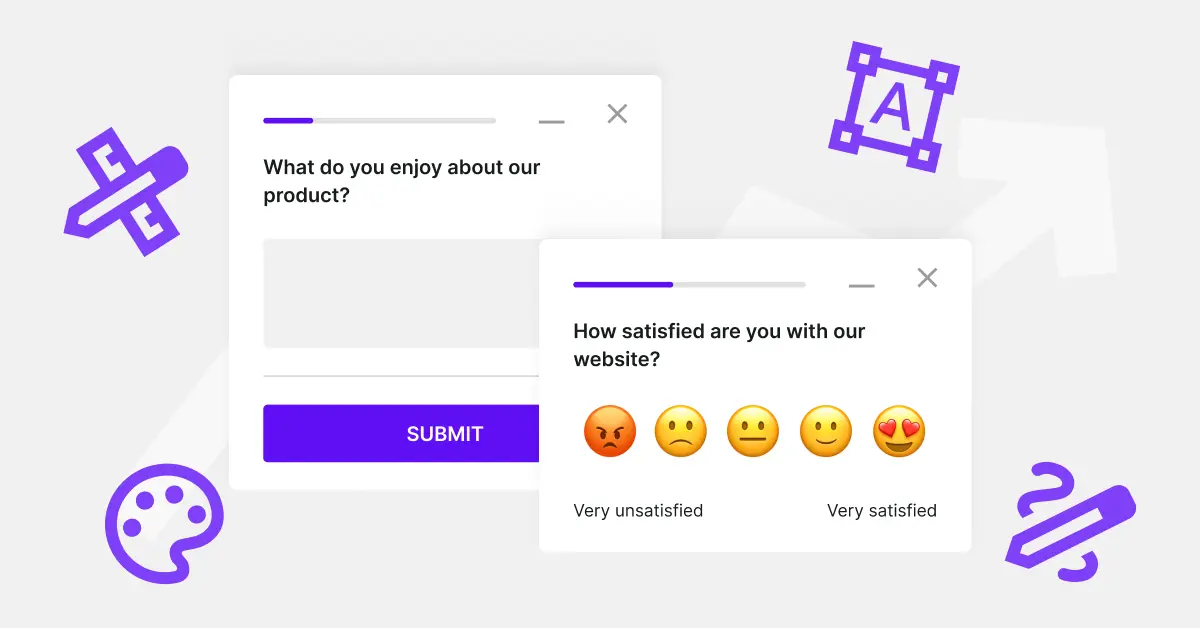
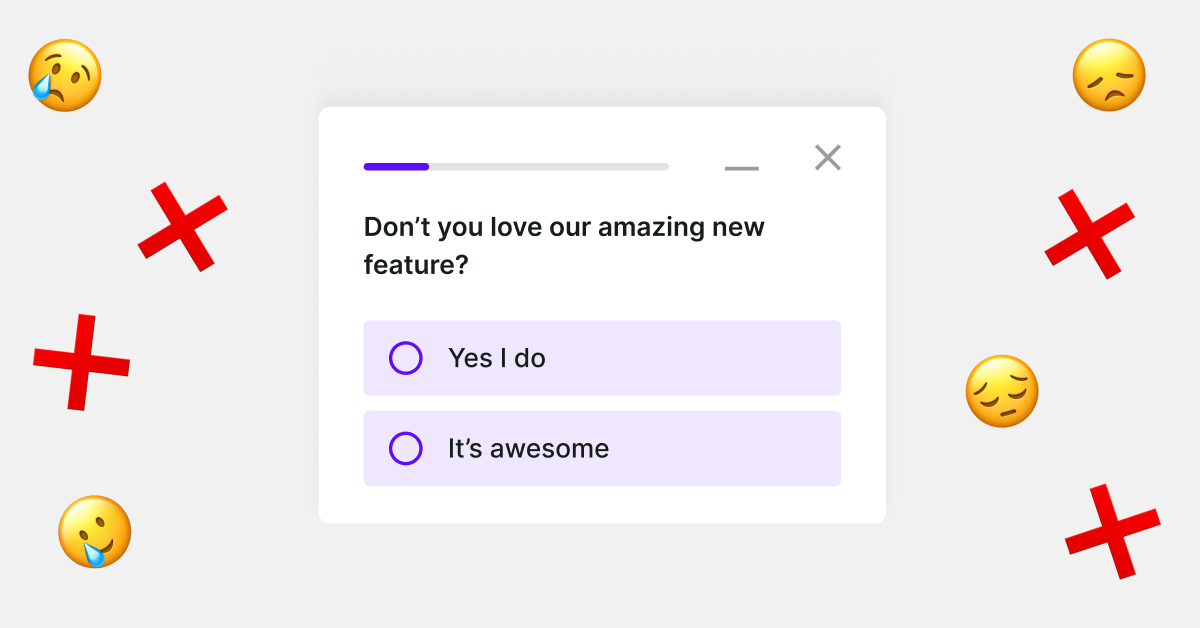
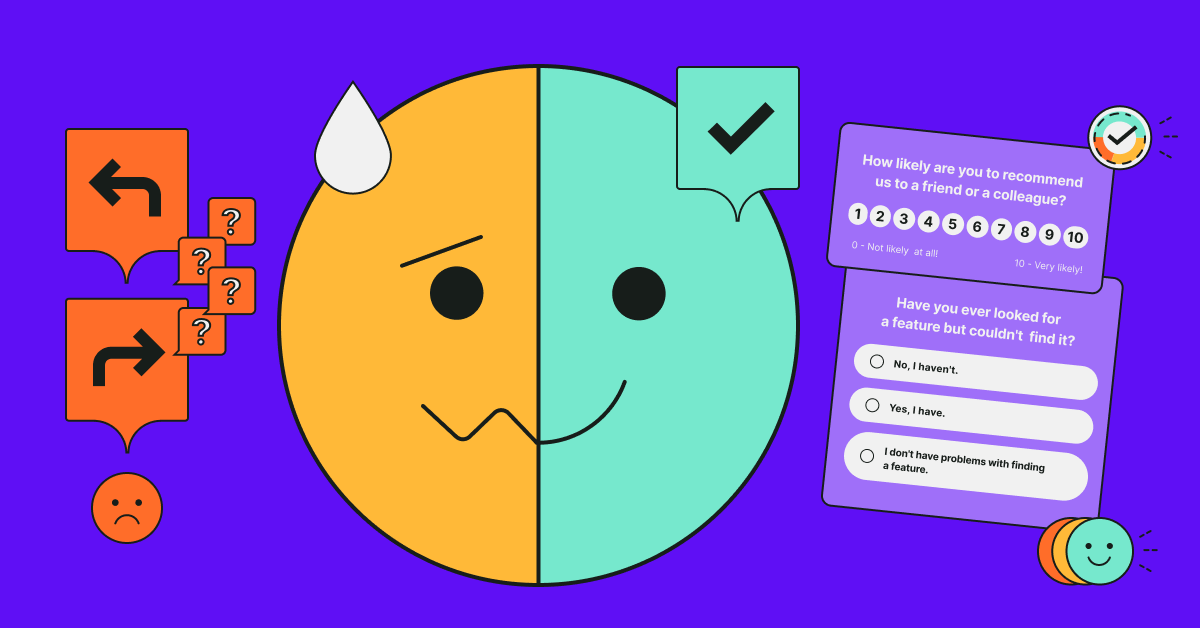

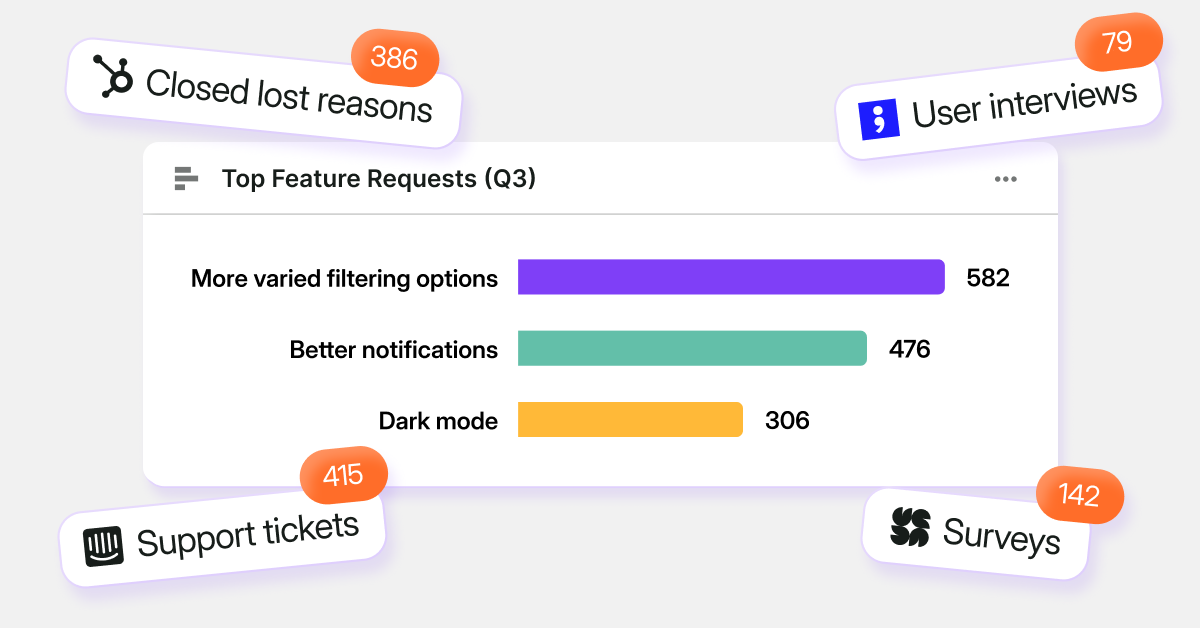
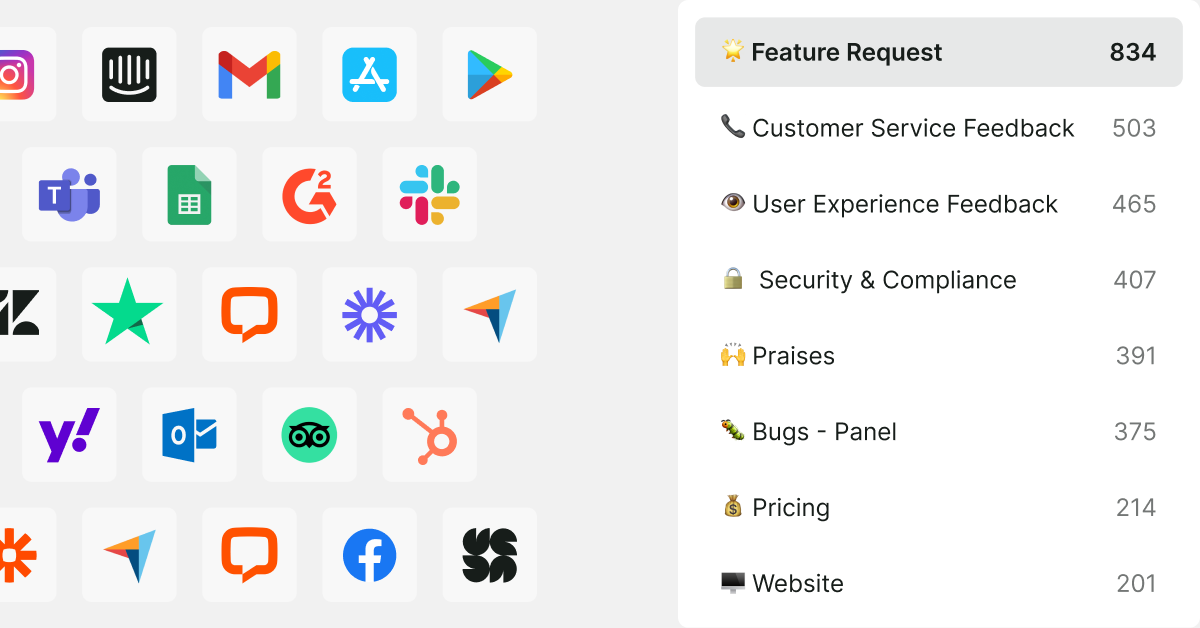
.svg)

.svg)



